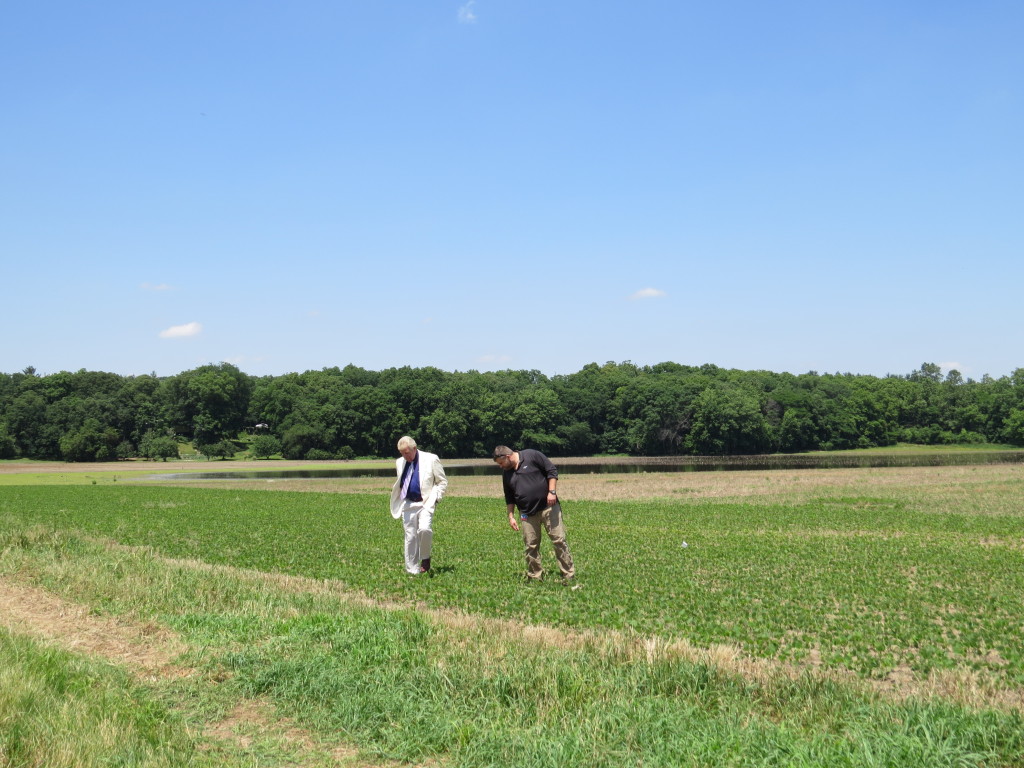On Friday morning September 19, 2014, Paul Gardner, Midwest Regional Director for TAC, sat in the Tippecanoe County Courthouse annex with Colby and Dell Bartlett of the Tippecanoe County Historical Association and thumbed through a five-page printout of 108 properties to be auctioned by the county for delinquent taxes. Amid the list of dilapidated homes, overgrown urban lots, and commercial parks that never came to be, were two farm fields encompassing the archaeological remains of at least two American Indian villages established in the early 18th century outside the walls of the French trading post of Fort Ouiatenon. The Archaeological Conservancy and the Tippecanoe County Historical Association had joined together in 2013 in a project to preserve permanently these nationally significant archaeological sites. The auction represented a critical phase in the preservation effort.
Fort Ouiatenon, founded in 1717, was the first European settlement in what is now Indiana and was a magnet for American Indians seeking immediate access to the trade goods the French brought. A number of tribes affiliated with the Algonquin-speaking Miami, including the Kickapoo, the Mascouten, and the Piankeshaw, settled their villages outside the walls of the fort. The fort itself was abandoned a few decades later, but the native settlements remained until 1791 when Kentucky militia routed the natives and burned their villages and fields. Overgrown by the returning forest and buried by the Wabash’s floods, the cultural remains were soon lost and fort’s location forgotten.
In the late 1960’s the fort’s location was rediscovered, and in 1972 the Tippecanoe County Historical Association purchased the land encompassing the French fort itself. The surrounding land containing the American Indian settlements remained in agricultural use for 40 years until deaths and relocations of the farming family left the 56 acres abandoned to the tax assessor’s auction.
As the auction began, bidding on the urban and commercial properties was rather lackluster, but bidding for the culturally significant agricultural fields began briskly with several potential buyers vying for the land. This was disappointing but not surprising, since Midwestern farmland is always in demand. But as the bids climbed upwards of the $100,000 mark, the farmers soon dropped out leaving the preservationists as the owners after expenditures of $101,000 and $106,000.
While prevailing at the auction is a great step towards preserving these nationally significant archaeological sites, uncertainty still remains. Under Indiana law, a year must pass before the former owner loses all rights to redeem the forfeited land. Given our history of fruitless negotiations, it seems doubtful that the former owner will manage to do so.




